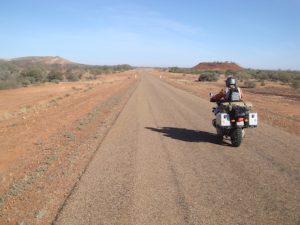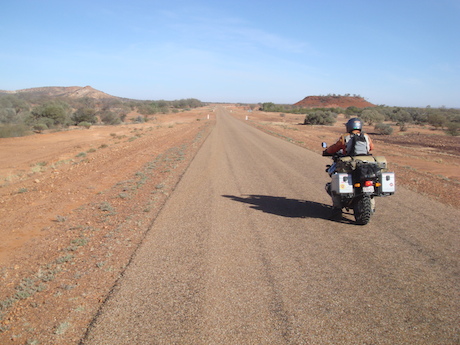Heavy trucks create so much road damage on our roads that motorcycles are forced to amend their safe cornering lines and road position.
Trucks create corrugations under braking, ruts in the road from their heavy loads, and leave oil and diesel in the centre of the lane. These hazards are more common on rural roads that are not well constructed and are populated by heavy livestock and grain trucks. However, I have also seen ruts and corrugations on our major highways. These hazards are all potentially dangerous traps for motorcycles, made worse by rain.

The common theory is to follow the wheel tracks in the rain to avoid the oil and diesel in the centre of the lane. This is true if it has just started to rain after a long dry period. This causes the oil and diesel come to the surface and make the centre of the lane very slippery. However, with more rain, it washes into the ruts created by truck wheels, where it pools and makes it even worse for traction. On the approach to corners and roundabouts, wheel tracks can also become corrugated by a truck’s skipping wheels under brakes. These will cause your back wheel to hop and reduce your bike’s braking performance.
In some instances, the best course is to ride wide of the wheel tracks, either toward the centre of the road or the outside, although you can encounter other hazards here such as broken road edges, gravel or oncoming traffic. In the wet, it’s best to slow down and use your eyes to scan the road surface for standing water, corrugations, potholes, ruts and rainbow colours that suggest oil and diesel spills. You can sometimes even smell the diesel, but often it’s too late and you are already in it.
Trucks also make cornering difficult for bikes. The usual practice is to turn in from the outside of a bend, clip the apex and then run wide on exit. However, if the road is rutted by trucks, it results in the rider running in and out of the wheel tracks while leaned over, which can cause instability. When the road is wet it also means your will be riding in and out of slippery areas.
The safest practice in heavily rutted corners – wet or dry – is to stay in the right wheel track for left-hand corners and vice-versa. This means you are not crossing the slippery centre part of the lane and not going in and out of the ruts. The outside wheel track also has the wider arc through the corner. On left-handers it keeps you further away from gravel that may have washed on to the road surface or been dragged on to the road by vehicles dropping a wheel off the edge. On right-handers it is the cleaner wheel track as trucks and cars often cut corners, dragging their sump oil leaks across the right wheel track. The reverse is true in countries where they drive on the right.
It’s not the quickest way through a corner, but it could be the safest way on roads that have been damaged by trucks.


